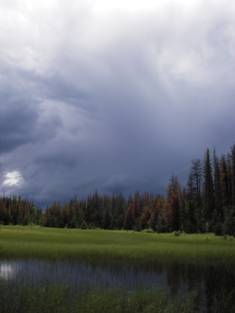In science we work, more often than not, in teams. Whether we work with one other individual, five individuals, or interact at workshops with hundreds of strangers, it’s important that we are clearly understood. Clarity is critical, especially when explaining complex concepts. KISS is my second favorite acronym, even if I can’t keep to the principle (NEFLIS, a camping acronym, is my favorite – No Excuse for Living in Squalor just because you’re out in the woods).
A recently funded project I’m working on, under the aegis of EarthCube, is the harmonization of the Neotoma Paleoecological Database and the Paleobiology Database. Neotoma is a database of Quaternary fossils (mammals and microfossils such as pollen and ostracodes), and the Paleobiology Database is a database of every other kind of fossil. Both are incredible repositories for their respective communities, and powerful research tools in their own right. My Distinguished Lecture talk at the University of Wisconsin’s Rebecca J. Holz Research Data Symposium was about the role of Community Databases in connecting researchers to Big Data tools, while getting their data into a curated form so that others could easily access and transform their data to undertake innovative research projects.

While both databases contain fossil data, there is a fundamental difference in how the data are collected. Typically Paleobiology DB data is collected in isolation, a fossil whale, discovered & reported is more common than a vertical stratigraphic survey on a single outcrop at a specific Latitude and Longitude. In Neotoma, so much of our data comes from lake sediment cores that it makes sense that much of our data (and data collection) is described from stratigraphic sequences.
This difference may not seem like much, especially when the Holocene (the last 11,700 years) is basically an error term in much of the Paleobiology Database, but it’s enough of a difference that we were apparently agreeing on much, but then, inexplicably, disagreeing on followup discussions.
This is one of the fundamental problems in interdisciplinary research. Interdisciplinarity is as much understanding the terms another discipline uses as it is understanding the underlying philosophy and application of those terms in scientific discourse. Learning to navigate these differences is time consuming, and requires a skill set that many of us don’t have. At the very least, recognizing this is a problem, and learning to address this issue is a skill that is difficult to master. It took us a morning of somewhat productive discussion before we really looked at the problem. Once addressed we kept going back to our draft semantic outline to make sure we knew what we were talking about when discussing each other’s data.
This is all to say, we had a great workshop and I’m really looking forward to the developments on the horizon. The PBDB development team is great (and so is the Neotoma team) and I think it’s going to be a very fruitful collaboration.




